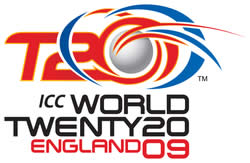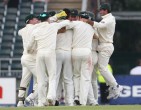Australia’s T20 World Cup Campaign: He’s dead, Jim.
Corey Taylor |
That Australia was knocked out of the World T20 in 3 days is a damning indictment on CA’s attitude toward the game and selection processes. Many public statements have been made by CA regarding Australia’s relative lack of success in the shortest form of the game, all have been rendered moot by the lack of planning, preparation and selection for the tournament. To paraphrase the favourite witticism of Vincent Bugliosi, famed prosecutor of Charles Manson, CA’s actions are speaking so loudly, we cannot hear a word they’re saying.
That players performing near the top of domestic T20 in Australia and the IPL in South Africa were overlooked would appear to be a dangerous precedent as those players may well more seriously entertain lucrative options, potentially giving up on playing for Australia altogether. Clearly Cricket Australia are worried about players doing exactly that as a recent Memorandum of Understanding between CA and the Australian Cricketer’s Association (ACA), with associated pay increases, was signed yesterday. This may quell angst in the short-term but there is likely to be several players considering plying their trade in annual 6-week tournaments in opposition to constant touring and the scrutiny that comes with representing a country.
The lack of preparation for the players was palpable. Australia did have two tough teams in their Group C matches but it’s unlikely to have made much of a difference which group they were placed in as, although the players selected were trying their hardest, they haven’t been given every chance to succeed. It comes as no surprise that the only players to impress in Australia’s two matches were those who at least played in the KFC Big Bash and IPL. Players who either skipped T20I’s, Big Bash matches and/or the IPL looked rusty but this is only a symptom of a wider problem. Ricky Ponting and Michael Clarke have regularly skipped T20I’s to rest from punishing schedules so not only do they not have form, their tactics seem somewhat agricultural. Australia as a whole has not moved on from the slog-fest mindset of T20’s early days whereas the game and players from other countries have evolved. It would seem to be a matter of experience in the format; the only way to improve tactics is to get time on the park. The same players who lack T20 experience and form are the same players engaging in unedifying, last-over-style slogs after being bogged-down.
The bowling is similarly affected; the best T20 bowlers have several clever slow-ball variations. Jerome Taylor showed the Australian batsmen plenty in his great spell against them. The Aussie bowlers showed their lack of experience in the format by serving up loose deliveries when batsmen came at them and were guilty of a lack of innovation. Rather than trying to outfox batsmen, the Aussie bowlers, in response to being hit for 6, would charge in and look on incredulously as their next deliveries went the journey too. Again, the lack of evolved tactics is laid bare.
The bigger issue is selection. The players themselves, world-class in other forms and ultimately responsible for their own play, cannot be blamed entirely if they’re not being played at the highest level. Conversely, those doing well in the format would surely be frustrated by the lack of opportunities for Australia. A quick look at the top-20 run-scorers for the KFC Big Bash, one notices only three batsmen (David Warner, David Hussey and James Hopes) who saw game-time for Australia in England. They also played for IPL teams. Unsurprisingly, those same three also showed glimpses of the form and tactics required to succeed in the format. The other batsmen who played against both the West Indies and Sri Lanka were not amongst the top performers for their states (when they actually fronted for them) and were not amongst the top scorers for their IPL teams when selected. This is particularly so with Michael Clarke and Ricky Ponting.
The most palpably missing name from the squad was Brad Hodge. He was in the top 5 run-scorers in T20 for both Victoria and the Kolkata Knight Riders, was amongst the top players last season for both teams as well as his English county side and is widely regarded as one of the most consistent T20 players in the game. How did a player like this miss out on selection at all let alone when Symonds was sent home? Instead, Cameron White, another well-credentialled T20 player with plenty of runs in England, is nursing some serious jetlag after being flown to England for 4 days only to miss out on selection for both matches. The Symonds fiasco would surely have de-stabilised the plans of the Australian team but these sorts of selections are baffling at best. Confusing messages abound for players such as Callum Ferguson who, it appeared, were building nicely towards this tournament with consistent performances for Australia and South Australia in T20’s and one-day matches, only to miss out on selection entirely. Their performances, come selection time, appear to have counted for little.
Aside from selection of players, the batting-order was a source of confusion. In all the warm-ups, Brad Haddin, the most in-form limited-overs players in the team, opened the batting, where he’s had most of his success in the past year. On match day, he was pushed down the order. Ricky Ponting, lacking experience and form in T20, batted at 3 for both matches whilst the Hussey brothers, with both form and experience in T20’s, were relegated to 6 and 7 where they did what they could with the very few overs they had to work with.
More questionable is the selection of the bowlers. The core Australian bowling attack comprised Brett Lee, Mitchell Johnson, Shane Watson and Nathan Bracken. Only Bracken played in the KFC Big Bash, the rest a veritable clown-car of either long-term injured or lack of match time for state, country or IPL team, their blown-out economy rates testimony to this. Australia was showing glimpses of their likely squad by picking well-performed T20 specialists in various T20I’s over the past year only to completely discard them for this tournament. Dirk Nannes, particularly aggrieved and having been amongst the top bowlers for Delhi after a great season with Victoria, signed on for team Holland who, unlike Australia, managed to beat someone. The back-up bowlers were Ben Hilfenhous and Peter Siddle. Both barely rate a mention amongst the best T20 bowlers in the game, Siddle himself playing no games for Victoria nor an IPL club. What was the basis for their selection?
Spin bowlers weren’t left out of the selection maelstrom. Australia only took one spinner, Nathan Hauritz, who didn’t play for NSW in any T20 matches and didn’t play for an IPL team. Other teams have selected spinners who bowl with clever variation rather than trying to keep it tight. These types of bowlers have proven far more useful against batsmen trying to hit them out of the ground. Australia is yet to catch on so a bowler with T20 form for his state, Jason Krezja, missed out.
In trying to read the actions of the Australian selectors, the evidence points strongly towards getting the current squad some game-time in England before the up-coming Ashes series. The similarities between the current squad and the likely Ashes squad is testimony to this. If this is the case, all the talk after Australia’s semi-final exit from the last T20 World Cup is rendered meaningless. That such a cricketing powerhouse would appear to take such a large-scale tournament so lightly is somewhat insulting to all the other teams who do take it seriously. If you remove the pride of playing for one’s country by treating a tournament such as the T20 World Championship as little more than preparation for another series, monetary compensation from player-to-player becomes important facet in the decision between club and country. Australia needs to start taking T20 seriously and quickly.





Leave a comment